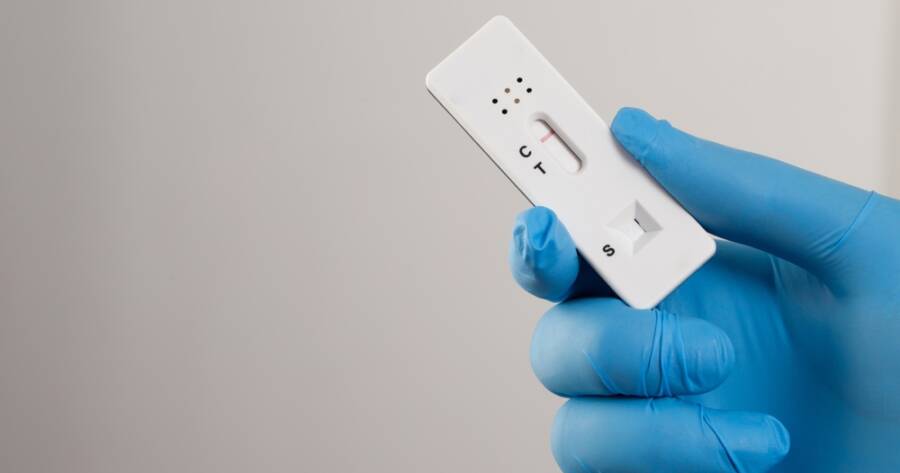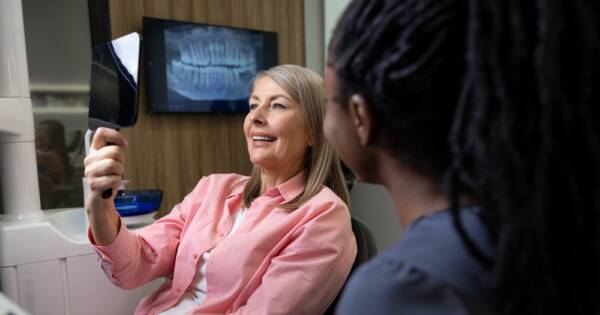The Biden Administration is relaunching the COVID tests by mail program, making it easier for Americans to access testing from the comfort of their homes. This initiative aims to boost public health efforts as concerns over new variants continue to rise.
How to Get Government COVID Tests by Mail
The Biden administration has revived its popular COVID-19 test by mail program. Americans can now order four at-home rapid tests per household through the government website, covidtests.gov.1 Shipping will begin promptly, with orders processed within a few days.
This initiative comes as part of the administration’s broader public health campaign to tackle the anticipated winter wave of respiratory illnesses, including COVID-19, flu, and RSV. With increased holiday gatherings and travel expected, the availability of testing ensures that more Americans can test for COVID-19 from the safety of their homes.2 This program is particularly helpful for those who may face challenges accessing testing sites or purchasing test kits themselves. Getting tests by mail eliminates both the cost and inconvenience, making it easier for households to stay protected.
The Benefits of At-Home COVID Testing
At-home COVID testing offers significant advantages, especially with test kits delivered right to your door.3 The convenience of at-home tests allows you to check for infection without needing to travel to a clinic or testing center, reducing potential exposure. Another key benefit is quick results. Most rapid tests provide results within 15-30 minutes, making it easier to take immediate precautions if necessary.
At-home testing is especially valuable during the colder months when viruses like COVID-19, flu, and RSV tend to spike. Having test kits on hand helps households stay proactive in monitoring their health, particularly before gatherings or travel. Additionally, at-home testing reduces strain on healthcare facilities by encouraging early detection and preventing the unnecessary spread of the virus. This convenience and control over your health make at-home COVID testing an essential tool for many families.
Tips for Testing at Home and Knowing When to See a Doctor
When using an at-home COVID test, follow the manufacturer’s instructions closely to ensure accurate results. It’s recommended to test at least 48 hours apart4 if you’re feeling sick, as COVID-19 antigen tests are more reliable when viral loads peak, usually several days after symptom onset.
If you’ve been exposed to COVID-19 but test negative early on, continue to isolate and test again after a few days. For those over 65 or with underlying health conditions, early testing is crucial, as antiviral treatments are most effective when administered shortly after symptoms begin. However, if you experience severe symptoms such as difficulty breathing, chest pain, or confusion, it’s important to seek medical care immediately. PCR tests, which are more sensitive than rapid tests, may be a better option if you need earlier detection or higher accuracy, especially in high-risk individuals.
Why Timing Matters for At-Home Testing
The timing of when you take an at-home COVID test significantly impacts its accuracy. Rapid antigen tests, while convenient, are less reliable in detecting early infection stages. The viral load in your body may take several days to reach a level detectable by these tests. If you experience early symptoms, isolating for a few days before testing may provide more reliable results.
Experts suggest that viral loads peak around four days after symptoms begin, particularly with the Omicron variant. Testing before large gatherings is a responsible choice, but it’s important to remember that a negative result doesn’t guarantee you aren’t infectious. Always pair testing with other safety measures, such as wearing masks and maintaining social distance, to better protect yourself and others from potential spread.
Learn More About At-Home COVID Testing
At-home COVID testing provides a convenient and accessible way to monitor your health, especially during peak virus seasons. By using rapid antigen tests at home, you can quickly determine if you’re infected and take appropriate precautions to protect others. While rapid tests may be less accurate in the early stages of infection, testing at the right time and following expert guidelines can enhance their reliability.
Stay informed about government programs that offer tests by mail, and always consider consulting a doctor if symptoms worsen. Learning more about at-home testing ensures you’re prepared to act swiftly when needed.




